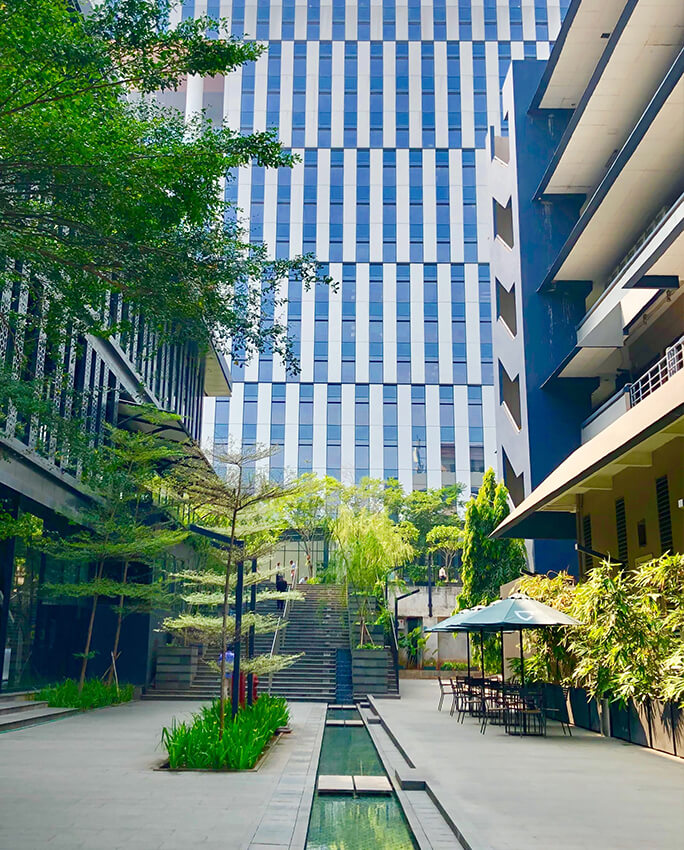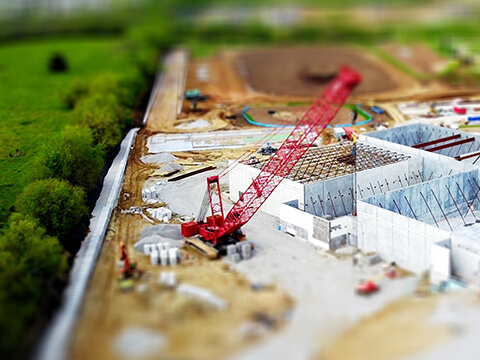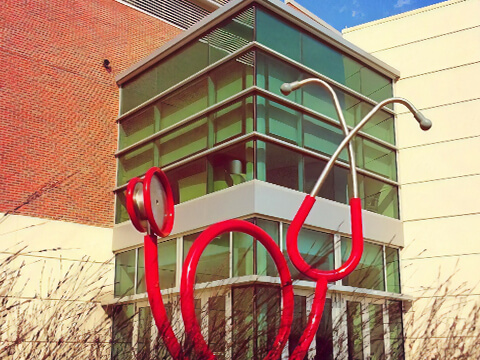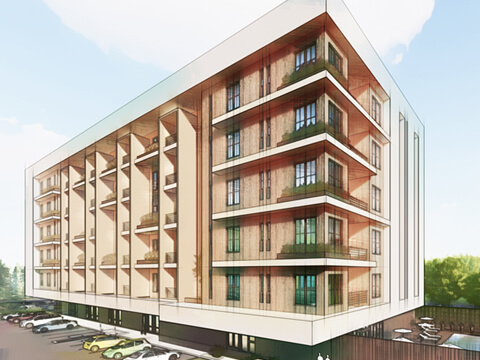 Currently, the U.N is warning all nations that carbon emissions must be cut down to zero by 2050. As a result of this urgent warning, there has been an increase in investments in the sustainable growth sector. Mixed-use buildings cater to this change in market demand by providing affordable housing while also being environmentally friendly.
Currently, the U.N is warning all nations that carbon emissions must be cut down to zero by 2050. As a result of this urgent warning, there has been an increase in investments in the sustainable growth sector. Mixed-use buildings cater to this change in market demand by providing affordable housing while also being environmentally friendly.
Vertical vs Horizontal mix use developments
Mixed-used developments can be categorized into 3 categories – vertical mixed-use building, horizontal mixed-use blocks or mixed-use walkable neighborhoods.
- Vertical mixed-use buildings utilize the lower floors for commercial use, while the upper floors are designated for residential use. Vertical mixed use buildings use less land and reduce the maintenance cost of a piece of property over time, potentially more than horizontal mixed use buildings.
- Horizontal mixed-use blocks combine single-use buildings designated for residential and non-residential use on the same block. The horizontal mixed-used blocks design can be convenient for developers in urban areas. Complex regulation in urban areas can make it difficult and expensive to develop a vertical mixed-use building.
- Mixed-use walkable neighborhoods involve a combination of vertical and horizontal mixed-use buildings that are within walking distance from each other.
Benefits of investing in a mixed use development
Mixed-use developments have several advantages over single-use developments. There are also several cons to mixed-use developments. Mixed-use developments provide some portfolio diversification, which allows for some cost reduction and protection against market turmoil.
Property managers must be well equipped to deal with the challenges of mixed-use developments. Property management that has relevant experience in dealing with such property types can lead to higher quality tenants, lower vacancy rates and greater support.
A large portion of mixed-use developments are regionally focused, leading to a concentration risk for investors. But for investors who are focusing on investing in one region, this could be a positive thing. Mixed-use developments can be expensive to construct and develop initially. But in most cases, the high profit margin for mixed-use developments rather compensates generously against this issue.
How to invest in a mixed-use development
Gaining access to the mixed-use development market can prove to be a challenge for some investors. The development community for mixed-use development properties is limited, but the market is continuing to expand, providing more opportunities for interested investors.
Development or direct investing are the two main ways to become involved in the mixed-use development market. The most common way to get started in mixed-use real estate is during the development phase. Investors must be able to identify potentially successful construction projects to finance.
Direct investing is another common method for entering the mixed-use development market. Purchasing existing mixed-use properties provides the perfect opportunity to directly invest in a mixed-use development. The downside to direct investing in this manner is the lack of investment opportunities available. As mixed-used development has a high potential for profit, top-performing mixed use property investment opportunities quickly become unavailable in the market. Investors still have the opportunity to invest and fix poorly maintained mixed-used properties.
There is also the option to invest in a real estate investment trust (REIT) or other types of investment vehicles. Investing in a REIT allows investors to invest in mixed-use properties without having to purchase a physical property.
When deciding whether to invest in a mix use development project investors should check for several things affordability, location, design, tenants and amenities. Future tenants will have a demand to stay in a community that is affordable, with a list of amenities and an abundance of job opportunities.






